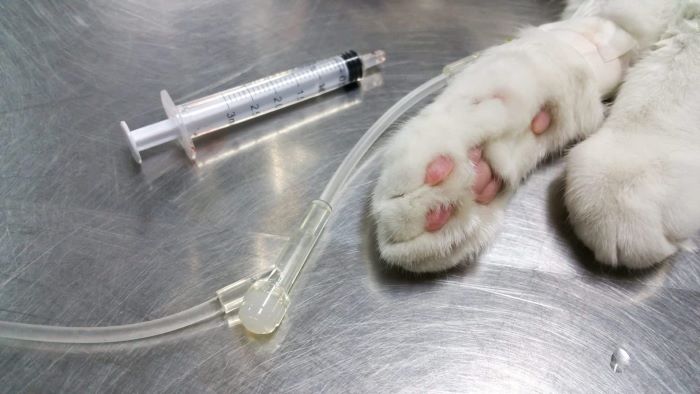Anesthesia is a word that tends to inspire uneasiness and fear in many people. In actuality, though, anesthesia is an indispensable tool in veterinary medicine (and human medicine, as well!). It is required for the painless performance of many important procedures, including surgery, dentistry, diagnostics, and restraint.
There are basically two types of anesthetics that are used alone or in combination in elective and non-elective surgeries. Injectable anesthetics are used quite often for procedures lasting for only a short period of time. For longer procedures, inhalation (gas) anesthesia is used for maintenance.
Newer, safer aesthetic agents are now available for use in pets. However, regardless of the type of aesthetic agent used, it is important to remember that none are totally risk-free. It is difficult to predict how each pet will react while under anesthesia, yet with strict monitoring and adherence to basic aesthetic principles, many problems can be avoided.
Ideally, animals should be as healthy as possible prior to undergoing anesthesia. For this reason, laboratory work is often required to confirm the health status of your pet. Of course, certain situations will require the use of anesthesia in sick animals. It is easy to see how the risks of anesthesia tend to be greater in these patients.
Older animals also tend to be at greater risk. Yet, again, with the proper laboratory workup and a good physical exam performed by a veterinarian prior to anesthesia, as well as close monitoring during the procedure, the risks associated with the anesthesia can be greatly minimized.
Owners, too, have a responsibility to help ensure the safety of a pet undergoing anaesthesia. Be sure to inform the veterinarian of all medications that your pet is currently taking, as well as any changes you have noted regarding your pet’s behaviour (more frequent urination, exercise intolerance, etc.). Don’t hesitate to review your pet’s past medical history with the veterinarian and to ask questions concerning the anaesthesia to be used.
If the pet is to stay at home the night before the surgery, it is imperative that all food be taken away at least 12 to 18 hours prior to the scheduled procedure. Water, on the other hand, may usually be offered up to 4 hours before the scheduled anaesthesia.
Be sure to check with the veterinarian regarding this subject. If for some reason your pet does eat food or drink water when it’s not supposed to, it is important that you relate this information to your veterinarian.











